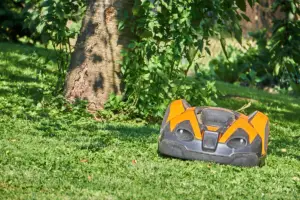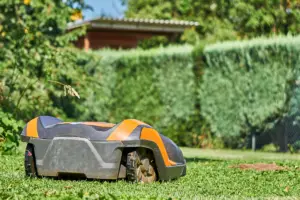Rats are a common problem in many households, especially during the colder months. These pesky rodents not only damage property but also spread diseases.
While there are many commercial rat traps available in the market, most of them can be quite expensive.
Homemade rat trap buckets, on the other hand, are a cost-effective and efficient solution to this problem.
A homemade rat trap bucket is easy to make and requires only a few common household items. It works by luring the rat with bait and then trapping it inside a bucket.
There are many different types of homemade rat trap buckets, including the “Walk the Plank” and the “Rolling Log” varieties.
Each of these traps makes use of basic physics to trick rats into condemning themselves with the simple allure of food.
With the right materials and a little bit of creativity, anyone can make a homemade rat trap bucket.
Not only is it an effective solution to a rat problem, but it is also an environmentally friendly option that does not involve the use of harmful chemicals.
In this article, we will explore the various types of homemade rat trap buckets and provide step-by-step instructions on how to make them.

Table of Contents
Why Use a Homemade Rat Trap Bucket?
Homemade rat trap buckets are an effective and affordable way to control rat populations in your home or yard.
Here are some reasons why you should consider using a homemade rat trap bucket:
Cost-Effective
Homemade rat trap buckets are incredibly cost-effective compared to other pest control options. You can create a trap using materials you already have at home, such as a bucket, wood plank, and bait.
This means you won’t have to spend money on expensive traps or professional pest control services.
Safe and Environmentally-Friendly
Using a homemade rat trap bucket is a safe and environmentally-friendly way to control rat populations.
Unlike chemical pesticides, homemade rat trap buckets don’t pose a risk to humans, pets, or wildlife.
Additionally, the traps can be easily disposed of without harming the environment.
Easy to Set Up and Use
Homemade rat trap buckets are easy to set up and use. You can create a trap in a matter of minutes using materials you have at home.
Once the trap is set up, all you have to do is wait for the rats to take the bait.
Effective
Homemade rat trap buckets are incredibly effective at controlling rat populations. Rats are attracted to the bait and will fall into the bucket, where they will drown.
This means you can quickly and easily eliminate rats from your home or yard.
Overall, using a homemade rat trap bucket is an affordable, safe, and effective way to control rat populations.
By using materials you already have at home, you can create a trap that will help keep your home and yard rat-free.
Materials Needed
Building a homemade rat trap bucket is a cost-effective and efficient way to rid your home of these pesky rodents. To get started, you will need to gather a few materials.
Bucket
The first thing you will need is a bucket. A five-gallon bucket is the most common size used for this type of trap, but you can use any size that works for you.
Just keep in mind that the larger the bucket, the more challenging it will be to transport.
Prices pulled from the Amazon Product Advertising API on:
Product prices and availability are accurate as of the date/time indicated and are subject to change. Any price and availability information displayed on [relevant Amazon Site(s), as applicable] at the time of purchase will apply to the purchase of this product.
Ramp
Next, you will need a ramp to allow the rats to climb up into the bucket. The ramp can be made from a piece of wood or cardboard.
It should be long enough to reach the top of the bucket and sturdy enough to support the weight of the rat.
Prices pulled from the Amazon Product Advertising API on:
Product prices and availability are accurate as of the date/time indicated and are subject to change. Any price and availability information displayed on [relevant Amazon Site(s), as applicable] at the time of purchase will apply to the purchase of this product.
Bait
Bait is an essential component of any rat trap. The most effective bait is peanut butter, but you can also use other food items such as bacon, fruit, or cheese.
Be sure to use a generous amount of bait to entice the rat into the trap.
Or try our alternative product below
Prices pulled from the Amazon Product Advertising API on:
Product prices and availability are accurate as of the date/time indicated and are subject to change. Any price and availability information displayed on [relevant Amazon Site(s), as applicable] at the time of purchase will apply to the purchase of this product.
Water
Lastly, you will need water to fill the bottom of the bucket. The water should be deep enough to drown the rat but not so deep that it touches the ramp. A depth of 2-3 inches is usually sufficient.
In summary, to build a homemade rat trap bucket, you will need a bucket, a ramp, bait, and water. With these materials, you can construct a trap that is both effective and humane.
Step-by-Step Instructions
If you want to make a homemade rat trap bucket, follow these simple instructions:
Step 1: Drill Holes in the Bucket
Take a 5-gallon bucket and drill two holes on opposite sides near the top of the bucket. These holes should be big enough to thread a wire or string through.
The wire will be used to create a ramp for the rats to climb into the bucket.
Step 2: Create a Ramp
Take a long wire or string and thread it through one hole and out the other. Bend the wire or string into a ramp shape, so it slopes down to the edge of the bucket.
Place the bucket on a level surface and make sure the ramp is secure and won’t slip.
Step 3: Add Bait and Water
Add bait to the bottom of the bucket. Peanut butter or cheese works well as bait. Fill the bucket with enough water to cover the bait.
The rats will climb up the ramp to get to the bait and fall into the water, where they will drown.
Remember to check the trap regularly and dispose of any rats caught. This trap is a humane way to get rid of rats without using poison or harming them in any way.
In conclusion, making a homemade rat trap bucket is easy and effective.
By following these simple steps, you can create a trap that will catch rats and help keep your home or property free of these pests.
Tips for Success
When it comes to homemade rat traps, success often comes down to a few key factors. Here are some tips to help you get the most out of your bucket trap.
Tip 1: Choose the Right Bait
The right bait can make all the difference when it comes to catching rats. Some popular options include peanut butter, bacon bits, and fruit cuttings.
Experiment with different types of bait to see what works best in your area. It’s also a good idea to refresh the bait regularly to keep it fresh and appealing.
Tip 2: Place the Trap in the Right Location
Location is another important factor to consider. Rats are typically active in areas where they have access to food and water, so it’s a good idea to place your trap near these areas.
Common locations include near garbage cans, in basements, and in areas where you’ve seen rat activity in the past. Be sure to also place the trap out of reach of children and pets.
Tip 3: Check the Trap Regularly
Finally, it’s important to check your trap regularly to see if you’ve caught any rats.
Depending on the size of your trap and the number of rats in the area, you may need to check it daily or even multiple times per day.
When checking the trap, be sure to wear gloves and dispose of any dead rats safely and hygienically.
By following these tips, you’ll be well on your way to catching rats with your homemade bucket trap.
Remember to be patient and persistent, and don’t be afraid to experiment with different baits and locations to find what works best for you.
Conclusion
Homemade rat trap buckets are an effective and inexpensive way to control rat populations.
They are easy to make and can be constructed using common household items. The traps work by luring rats into the bucket with bait and then trapping them inside.
When constructing a homemade rat trap bucket, it is important to use the right bait. Peanut butter, bacon bits, and fruit cuttings are all effective choices.
Additionally, the trap should be placed in an area where rats are known to frequent, such as near garbage cans or in a dark corner of a basement.
While homemade rat trap buckets are effective, they may not be suitable for everyone.
People who are uncomfortable with handling live rats or who have a large infestation may want to consider hiring a professional pest control service.
Overall, homemade rat trap buckets are a simple and effective way to control rat populations.
By using the right bait and placing the trap in the right location, homeowners can successfully rid their homes of these pesky rodents.
- How to Build a Planter Box for Bamboo: A Step-by-Step Guide

- Can Robotic Lawnmowers Handle Steep Slopes?

- Do You Need a Specific Lawn for a Robotic Lawnmower? Expert Advice

- Are Robotic Lawnmowers Safe for Pets and Children? Safety Features of Robotic Lawnmowers

- Why Use Robotic Lawnmowers? Advantages of Using a Robotic Lawnmower

- Is the GARDENA SILENO City 300 Cordless or Corded? A Clear Answer





























